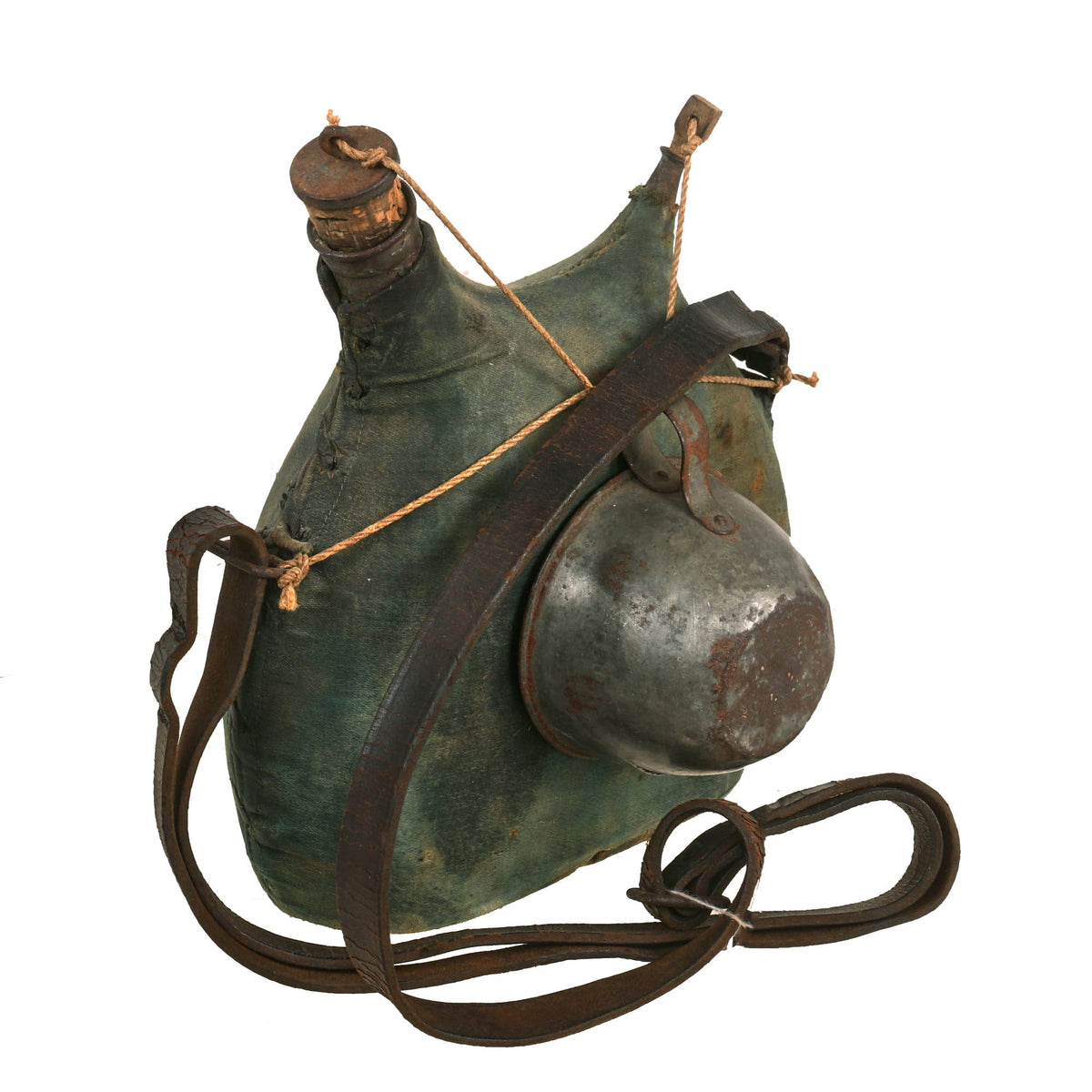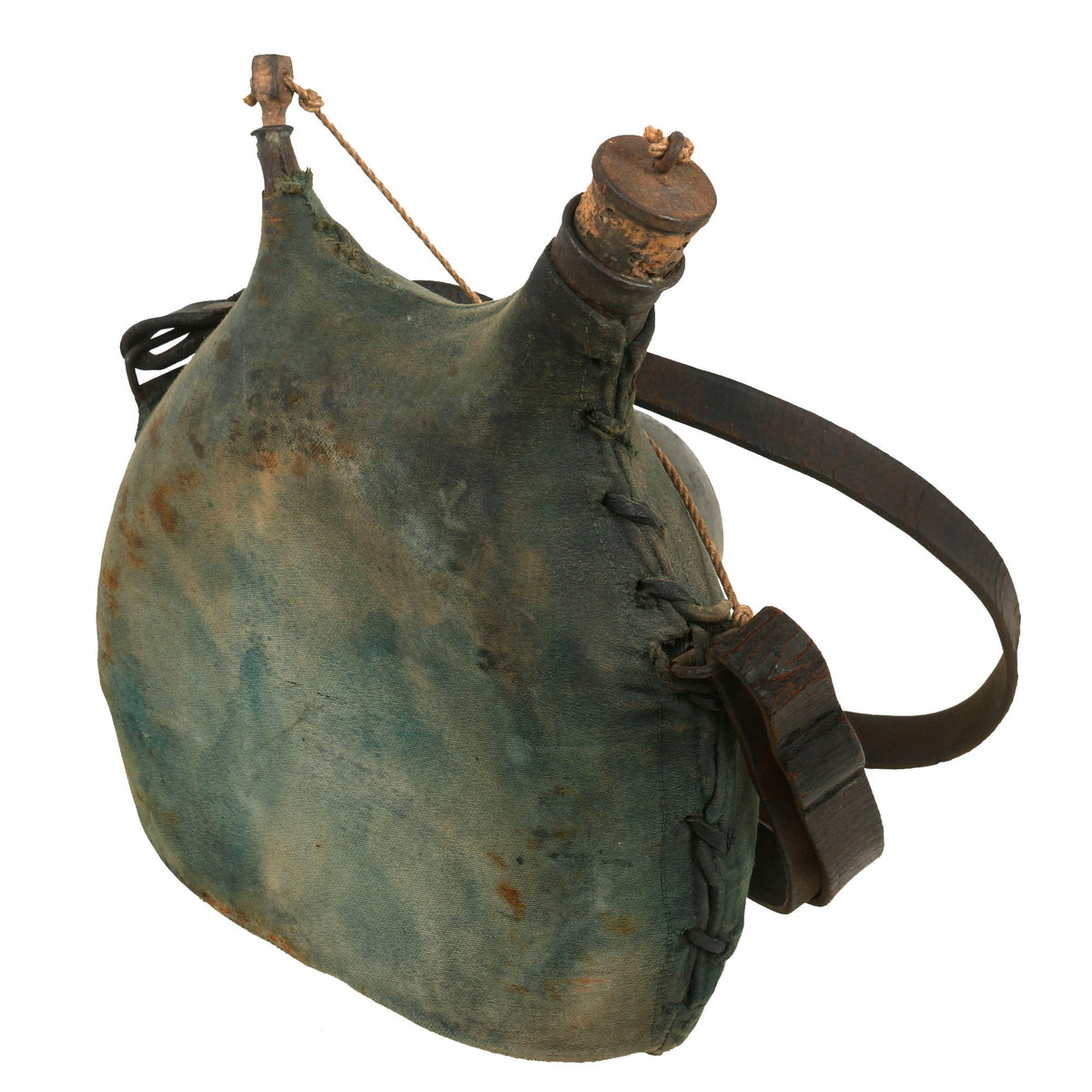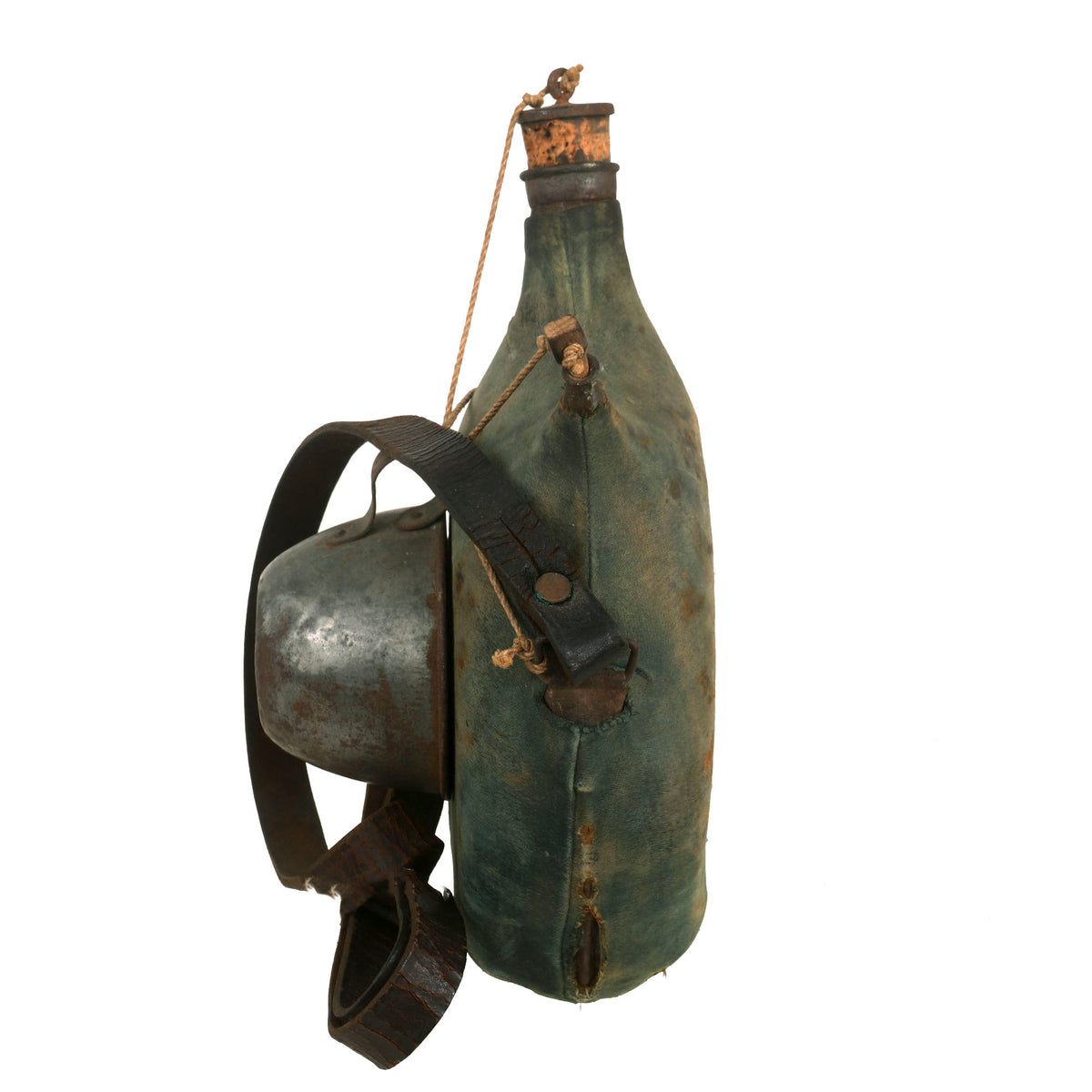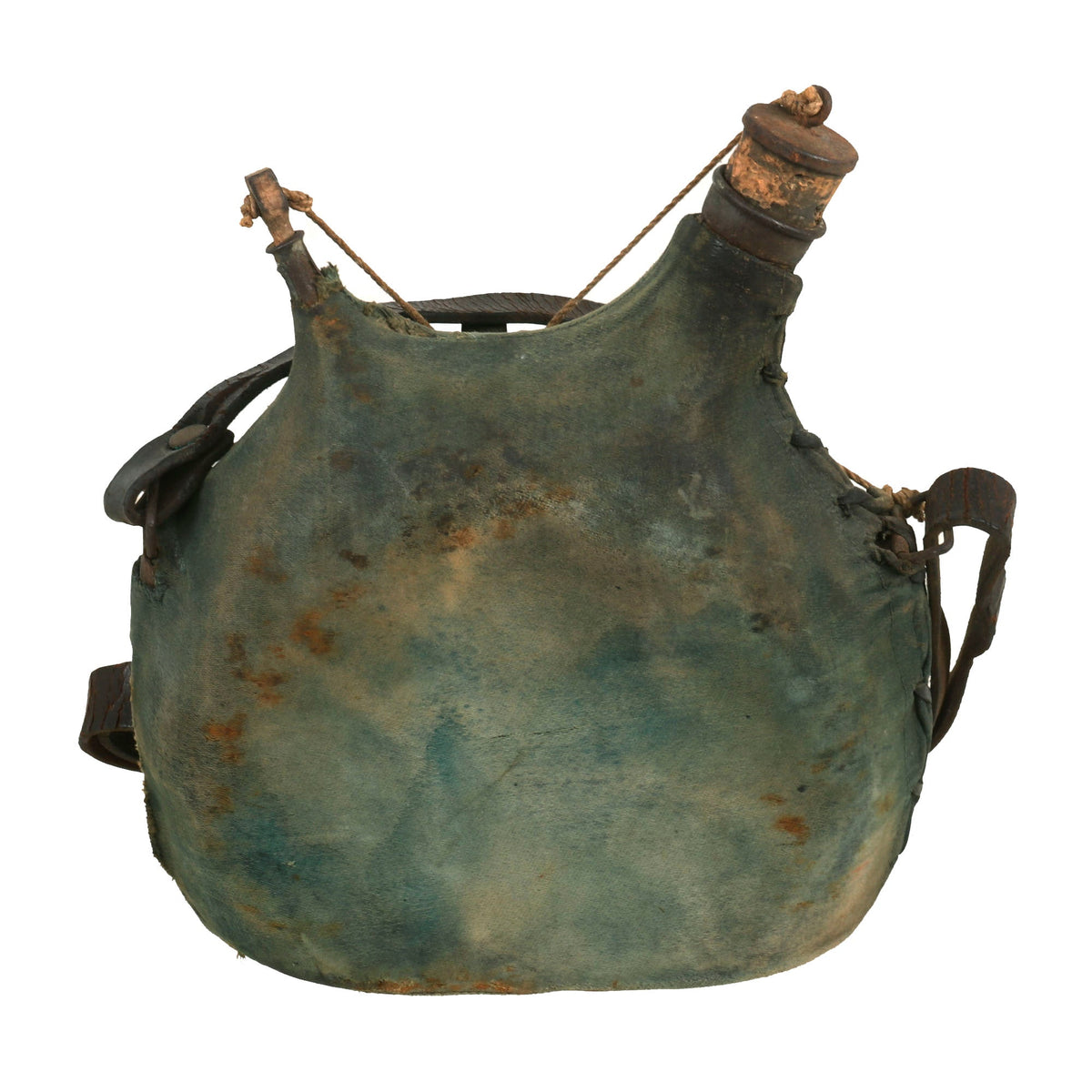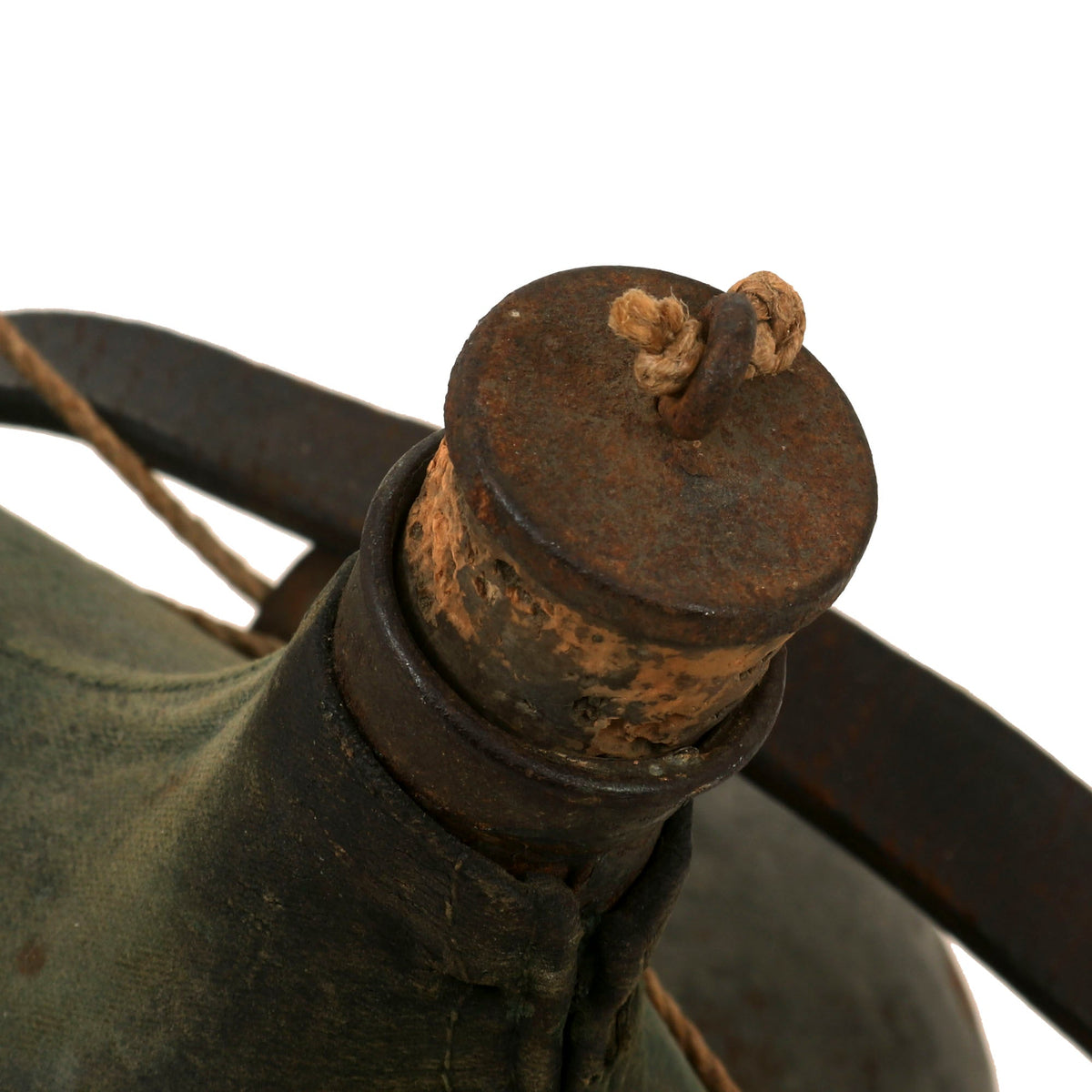Original French WWI Model 1877 Canteen with Cover in Horizon Blue with Shoulder Strap and Tin Cup – Untouched Original Items
$ 395,00 $ 118,50
Original Item: Only One Available. This is a very nice example of a “horizon blue” canvas covered Model 1877 French 2-liter canteen, complete with the original cover, full length leather shoulder strap, and tin cup. Amazingly, both the wood and cork stopper are still present. What really pulls this set together is the original string that loops through both stoppers and both shoulder strap bales to hold the tin cup in place on the side of the canteen, which is how the canteen was normally worn on the soldier. This set is untouched and in its original configuration.
This canteen is in great shape with heavy staining on the blue cover. There is a nametag on the bottom of the canteen as is often seen, but the name is lost to time. The cover is torn in some spots but is still well secured to the canteen. The strap shows heavy cracking but is still supple.
The Bidon (Can) is either a 2-liter or 1-liter canteen, covered with horizon blue or later khaki wool cloth. Both types had two spouts, a large and small, that were stopped with either wood or cork which was secured to the canteen itself with string. Often two bidons were worn; in the assault, one bottle typically contained wine (pinard) mixed with water, the other coffee and tafia spirit. Many Americans chose to carry a french canteen due to their capacity.
At the start of WWI the Metropolitan troops were using the 1 Litre Modèle 1877 Bidon, which was covered in dark blue cloth, while those forces in North Africa were using the 2 Litre Modèle 1877 Bidon which was also covered in a dark blue cloth. The French military had thought that 1 liter was enough water to carry while on campaign as they could get re-supplied with water easily but as the war went into trench warfare re-supply became an issue and getting water to the front became difficult so then by 1915 ALL French forces started to get issued the 2 liter version.
Covers came in many different colors and variations depending on the years they used, in 1914 dark blue was the norm; 1915 dark blue was still popular but as they were starting to go to a new horizion blue uniform, this color of cloth was also started to be used on the bidon themselves but other colors were also used with the ersatz type uniforms that were being used during this period such as brown courderoy, blue-gray or dark blue-gray. Colonial troops were starting to get their moutarde (khaki) uniforms during this period so covers were made in this color. Now during this period it was not uncommon for the bidons to be painted in a variety of colors listed above as well. In 1916 things started to become more uniform, horizion blue for metropolitan and moutarde for colonial troops, so covers were made in these cloth and issued which went all the way to the end of the war in 1918.
Fast Shipping with Professional Packaging
Thanks to our longstanding association with UPS FedEx DHL, and other major international carriers, we are able to provide a range of shipping options. Our warehouse staff is expertly trained and will wrap your products according to our exact and precise specifications. Prior to shipping, your goods will be thoroughly examined and securely secured. We ship to thousands clients each day across multiple countries. This shows how we're dedicated to be the largest retailer on the internet. Warehouses and distribution centres can be located throughout Europe as well as the USA.
Note: Orders with more than one item will be assigned a processing date depending on the item.
Before shipping before shipping, we'll conduct a thorough inspection of the items you have ordered. Today, the majority of orders will be delivered within 48 hours. The delivery time will be between 3-7 days.
Returns
The stock is dynamic and we cannot completely manage it because multiple stakeholders are involved, including our factory and warehouse. So the actual stock may alter at any time. It's possible that you may not receive your order once the order has been made.
Our policy is valid for a period of 30 days. If you don't receive the product within 30 days, we are not able to issue a refund or an exchange.
You can only return an item if it is unused and in the same state as the day you received it. You must have the item in its original packaging.
Related products
Uncategorized
Australian WWII Owen MK1 Machine Carbine SMG Custom Fabricated Replica with Sling Original Items
Uncategorized
Uncategorized
Uncategorized
Uncategorized
Uncategorized
Uncategorized
Armored Burgonet Helmet & Polearm from Scottish Castle Leith Hall Circa 1700 Original Items
Uncategorized
Uncategorized
Uncategorized
Uncategorized
Uncategorized
Armoured Fighting Vehicles of the World: AFVs of World War One (Hardcover Book) New Made Items
Uncategorized
Uncategorized
Uncategorized
Uncategorized

